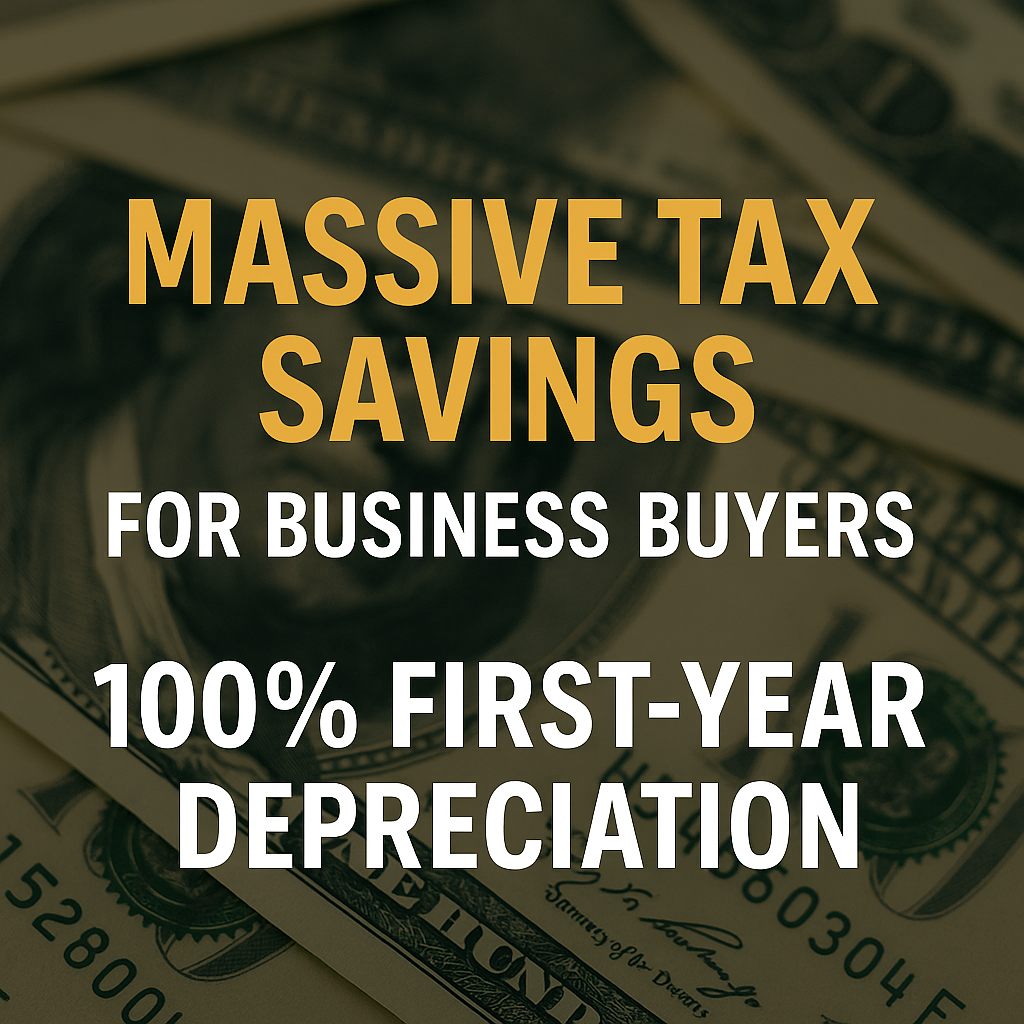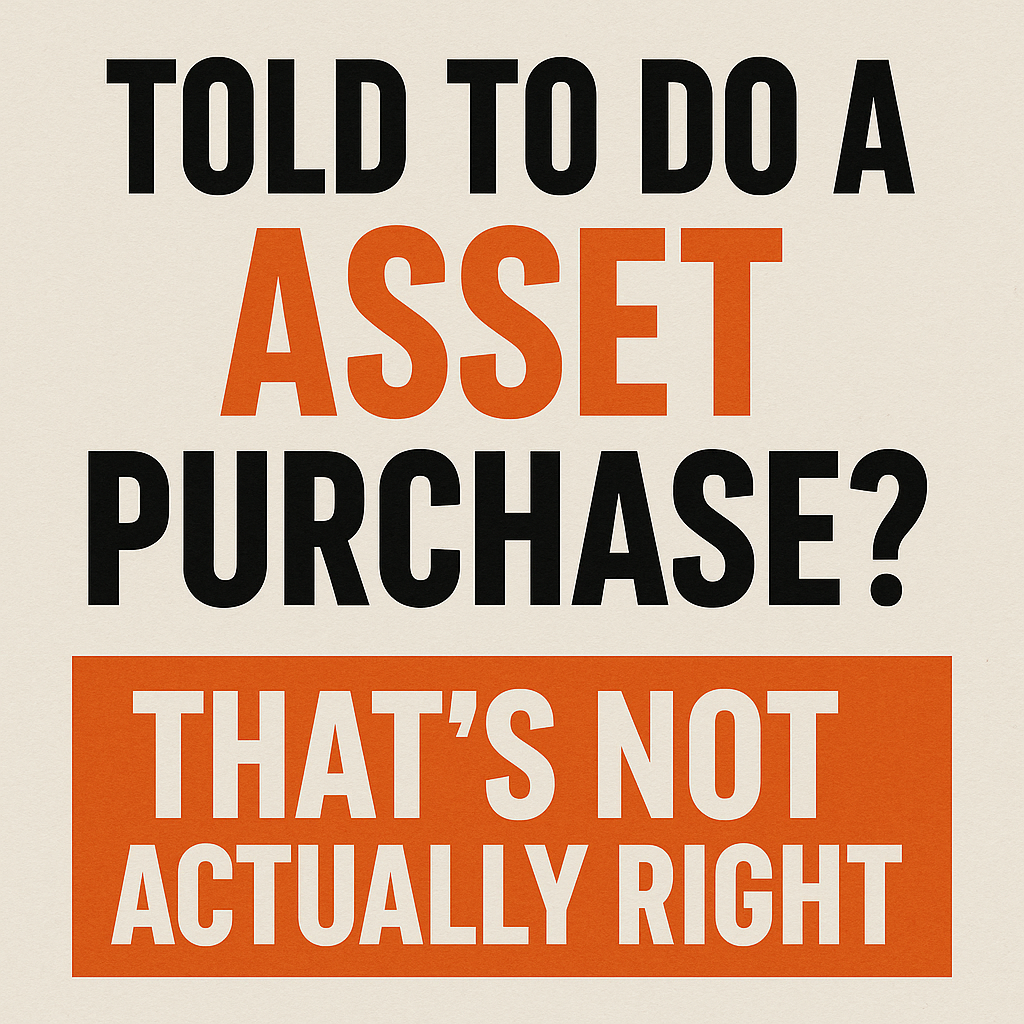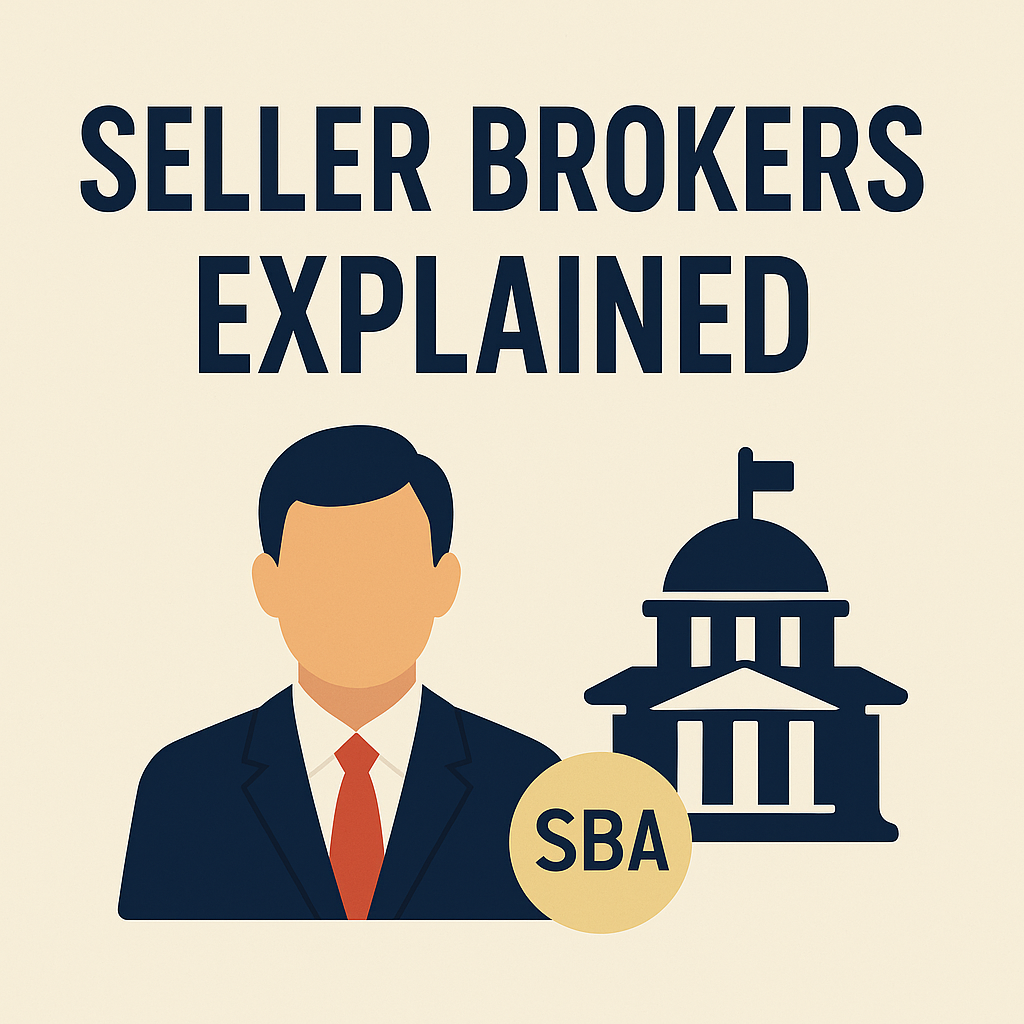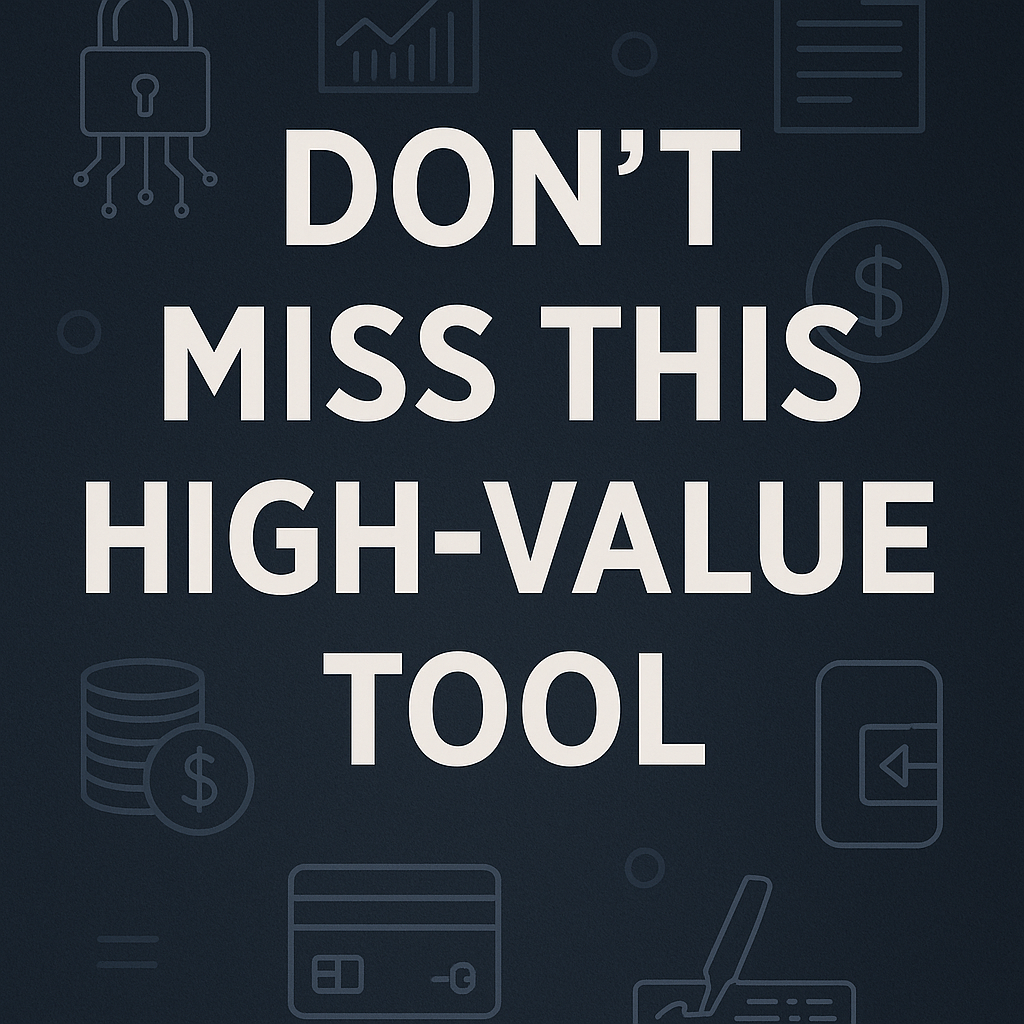
100% First-Year Depreciation
- General
- October 23, 2025
Buying your first business is one of the biggest financial moves you’ll ever make. The good news? A recent change in federal tax law gives business buyers a major advantage: the ability to write off the full cost of most equipment, furniture, and fixtures in the very first year after purchase.
In plain English: If you buy a business in 2025 or later, you can likely deduct the entire cost of its machinery, computers, office furniture, and other qualifying property right away. That means massive tax savings in year one — and extra cash to grow your new business.
This article explains what the law changed, what kinds of property qualify, and how smart buyers can use this rule to dramatically lower their tax bill after an acquisition.
The Big Picture: What Changed in 2025
Back in 2017, Congress passed a tax law that allowed business owners to immediately deduct 100% of the cost of qualifying business property (instead of spreading deductions out over 5, 7, or even 15 years). This rule was called bonus depreciation.
But bonus depreciation was scheduled to phase down:
- 2023: 80% deductible in year one
- 2024: 60% deductible in year one
- 2025: 40% deductible in year one
- 2026: 20% deductible in year one
- 2027: 0% deductible
So, by 2025, the benefit was shrinking fast.
Then, in early 2025, Congress passed a new law called the One Big Beautiful Bill Act. Among many other tax changes, it restored full 100% first-year depreciation permanently. That means:
- For property placed in service after January 19, 2025 → 100% write-off is back.
Why This Matters for First-Time Business Buyers
When you buy a business, you often face a big question: Should you buy the stock or the assets?
- In a stock purchase, you step into the shoes of the seller, with no new depreciation.
- In an asset purchase, you get a fresh “step-up” in the tax basis of the assets.
Here’s where the new law comes in: In an asset purchase, you can allocate part of the purchase price to furniture, fixtures, equipment (FF&E), machinery, and other qualified property. Thanks to 100% bonus depreciation, you can deduct all of that right away.
That means buying $1.5M worth of equipment in a deal could give you a $1.5M deduction in year one.
For many buyers, that’s the difference between barely breaking even and having hundreds of thousands of extra dollars in tax savings to reinvest into the business.
What Property Qualifies for 100% First-Year Depreciation
Not every asset in a deal qualifies, but the list is still very generous. Generally, any tangible property with a useful life of 20 years or less qualifies.
✅ Qualifies
- Equipment & machinery (production equipment, vehicles, shop tools, etc.)
- Furniture & fixtures (office furniture, shelving, lighting fixtures)
- Computers & servers
- Certain improvements to nonresidential real estate (HVAC systems, roofing, alarm systems, fire protection systems)
- Used property, as long as it’s “new to you” (i.e., you didn’t own it before and you’re not buying it from a related party)
❌ Does Not Qualify
- The building itself (i.e. the structural shell, foundation, land)
- Land itself
- Goodwill and intangibles (amortized over 15 years)
A Simple Example
Let’s say you buy a small manufacturing company for $5 million in 2025. Together with the seller, you agree on the following purchase price allocation (a required step in an asset purchase):
- $3 million → Goodwill and intangibles (15-year amortization)
- $1.5 million → Equipment and machinery (7-year property)
- $500,000 → Inventory (deducted as sold)
Tax result under the new law:
- You can immediately deduct $1.5 million for the equipment in year one.
- You start amortizing the $3 million goodwill over 15 years.
- You expense inventory as it sells.
That $1.5 million deduction could translate into hundreds of thousands of dollars in tax savings in the very first year.
What About Section 179 Expensing?
Some of you may have heard of another rule — Section 179 expensing. This is a separate deduction that also allows immediate write-offs.
Here’s the difference:
- Section 179 is limited to $2.5M per year (phasing out after $4M). It also can’t create a net loss.
- Bonus depreciation (100% expensing) has no dollar limit and can create a net operating loss.
In practice, most buyers will rely on bonus depreciation for big deals, but Section 179 can still be useful for smaller purchases or when you want more control over timing.
New Benefit: Carrying Forward Net Operating Losses (NOLs)
One powerful feature of bonus depreciation is that it can create a net operating loss (NOL). In simple terms, if your deductions are larger than your income in a given year, you don’t “lose” those extra deductions. Instead, you can carry them forward and use them to offset taxable income in future years.
- Example: If you buy a business and claim $2M in depreciation, but your income that year is only $1M, the “extra” $1M deduction doesn’t disappear. You can carry it forward and apply it against next year’s profits.
- This effectively means the tax savings follow you, even if your first year is unprofitable.
- For a first-time buyer, this can provide peace of mind: your big upfront deductions will still deliver value, even if the business takes time to ramp up.
Why Sellers Care (and Push Back)
One thing to keep in mind: For buyers, allocating more of the purchase price to equipment = bigger tax write-off. But for sellers, that same allocation means paying more ordinary income tax (instead of long-term capital gains).
That’s why purchase price allocation is one of the most heavily negotiated pieces of a deal. Buyers want high allocations to depreciable assets. Sellers want high allocations to goodwill.
The key takeaway: This is negotiable — and it has real dollar impact. Smart buyers should understand the leverage they have and the tax savings at stake.
State Tax Caution
Not every state follows federal bonus depreciation rules. For example, California does not allow bonus depreciation. That means you’ll still get the federal deduction, but not necessarily at the state level.
Always check with your tax advisor about state conformity rules.
Key Takeaways for First-Time Buyers
- 100% First-Year Deduction is Back — Equipment, furniture, machinery, computers, and certain improvements can be fully expensed in year one.
- Used Property Qualifies — As long as it’s new to you and not from a related party.
- Massive Tax Savings — The right purchase price allocation can save buyers hundreds of thousands in the first year after closing.
- Net Operating Losses Carry Forward — Even if your deductions exceed your income, you can use the excess in future years.
- Negotiate Allocation Carefully — Push for more value allocated to FF&E and equipment (within reason), but expect pushback from sellers.
- Bonus Depreciation vs. Section 179 — Both are tools, but bonus depreciation has no cap and is usually better for larger deals.
- State Rules May Differ — Don’t assume your state follows the federal rule.
Final Word
For first-time business buyers, the new 2025 tax law is a game-changer. The ability to fully expense qualifying property in the first year can dramatically reduce your tax bill, improve cash flow, and give your new business a strong financial foundation.
At Prencipe International, we help buyers structure acquisitions to maximize these tax benefits, negotiate smart purchase price allocations, and avoid pitfalls that could limit your deductions.
If you’re considering buying your first business in 2025 or beyond, talk to us about how to structure your deal. The right planning can mean the difference between a tight first year and a financially powerful one.





